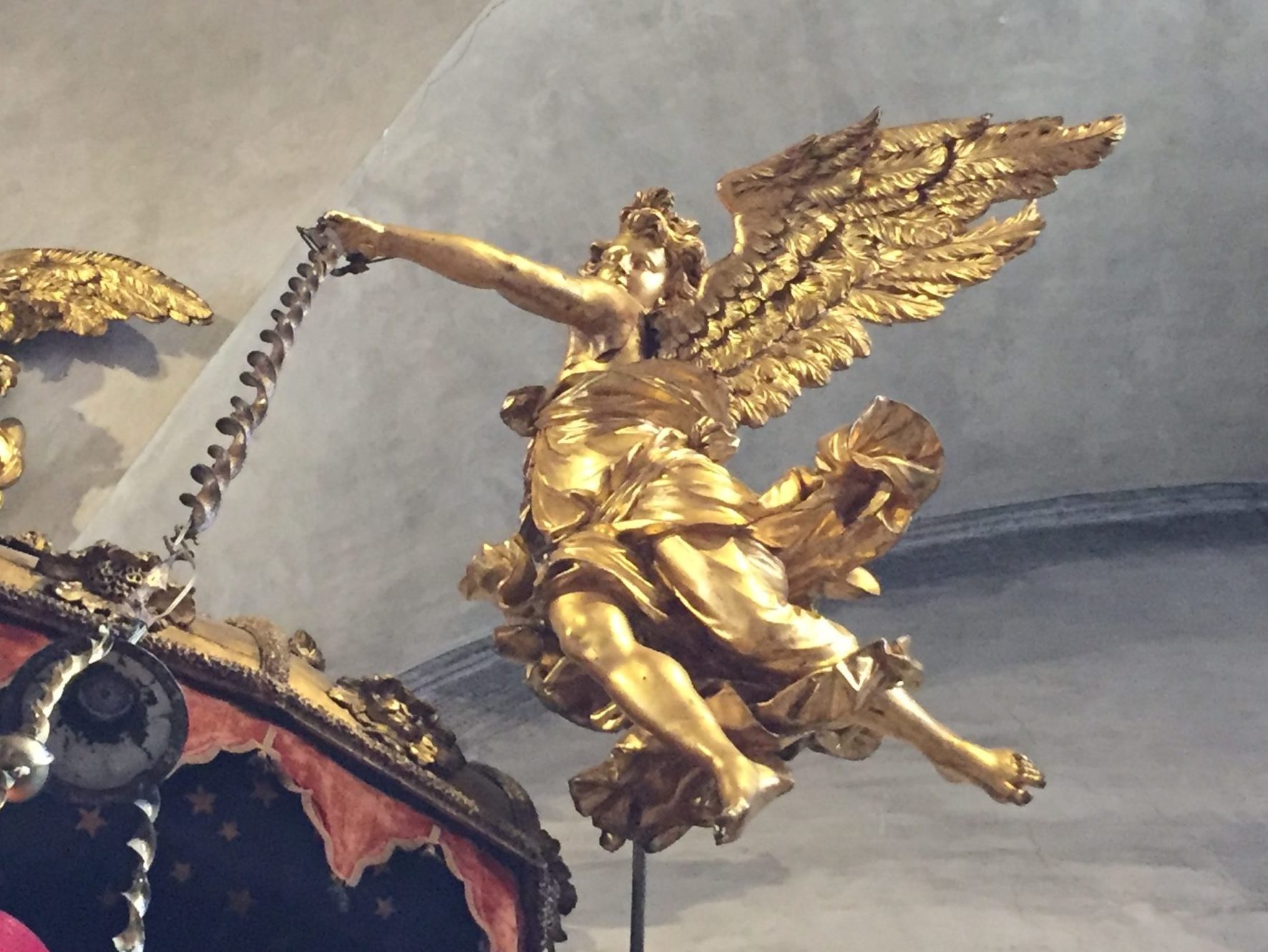Wooden Jewels in Venice
Wood has always been one of the most widely used materials in Venice; from the foundations of its buildings to the “altane” (rooftop terraces) above them, the functionality and beauty of wood is everywhere on display.
Many artistic treasures in the city are also the work of skilled sculptors who used wood to create decorations and furniture for the most important churches and residences in Venice. Let’s discover some of these wooden jewels and the artists who crafted them.
Marco Cozzi
When you enter the first room of the Accademia Galleries in Venice, your eyes are enthralled by its golden ceiling populated by masterfully carved angels, each one displaying eight golden wings and looking down at you with its own, individual facial expression. This stunning decoration was created between 1461 and 1484 by Marco Cozzi, an artist from a family of woodcarvers originally from Vicenza.
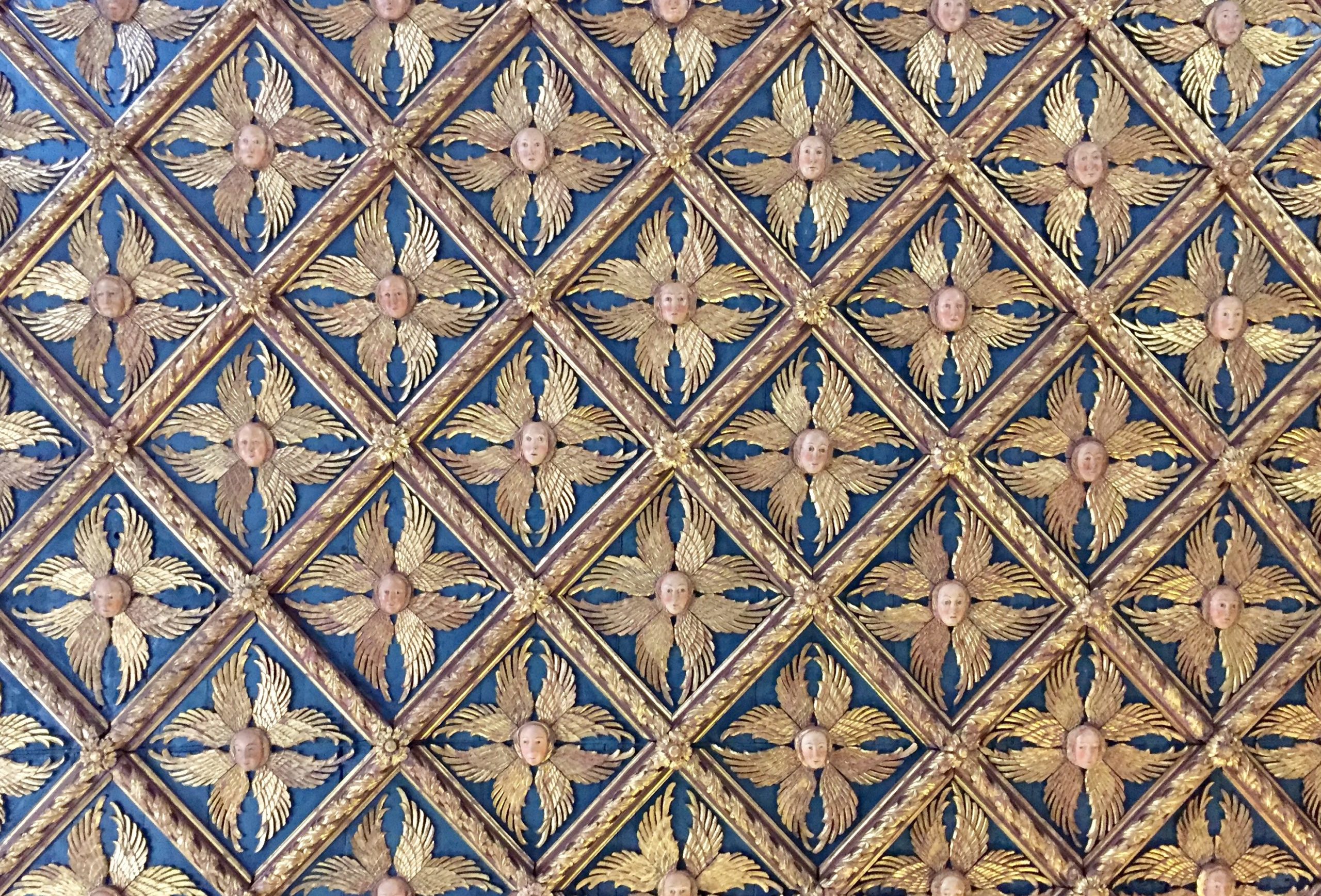
Cozzi is also the creator of another wooden wonder in Venice: the backbenches for the choir of the Church of Santa Maria Gloriosa dei Frari. The 124 seats are decorated with images of saints in relief and cityscapes in inlay, among which we can also find the date (1468) and the name of the artist together with that of his brother Francesco.
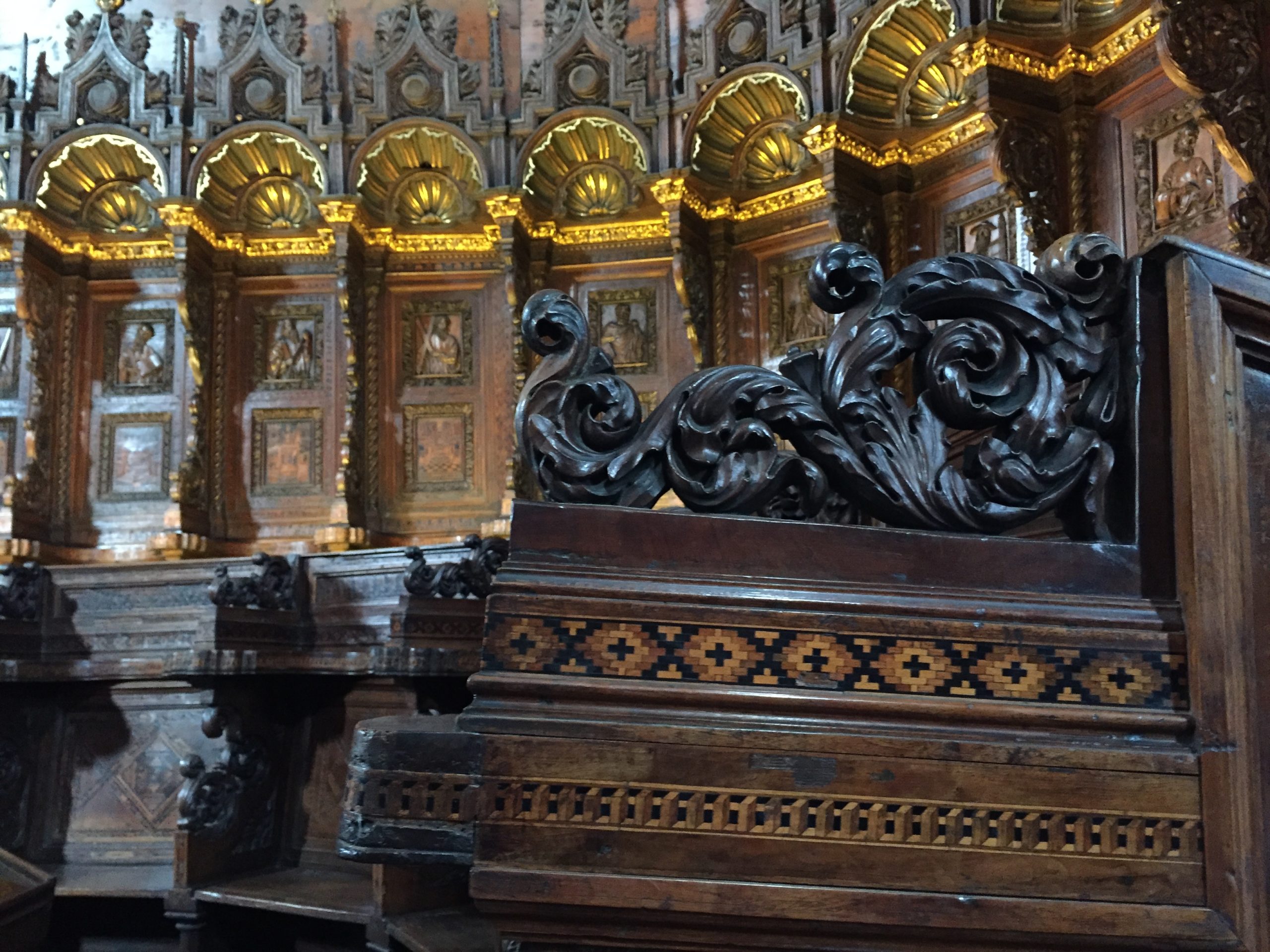
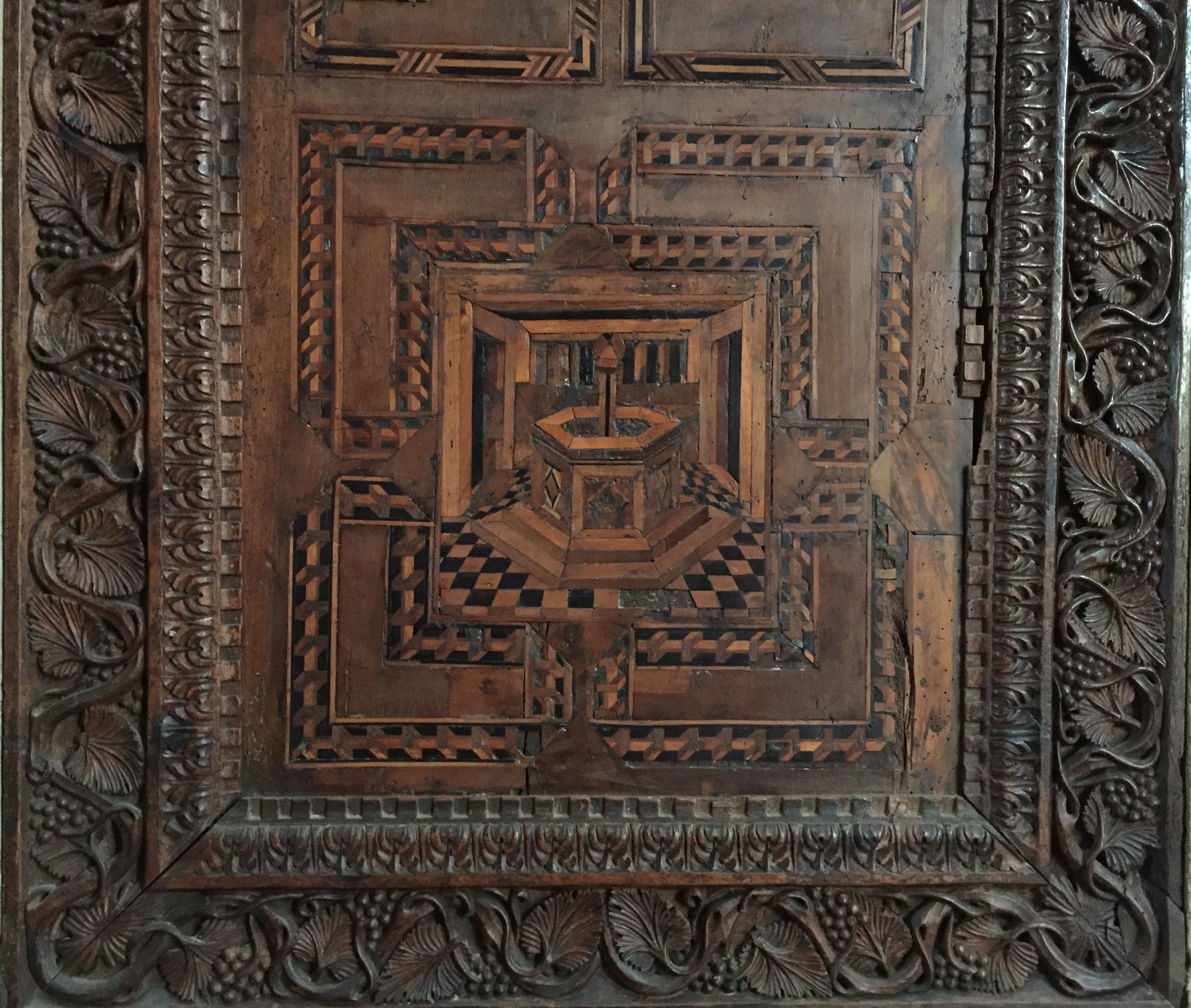
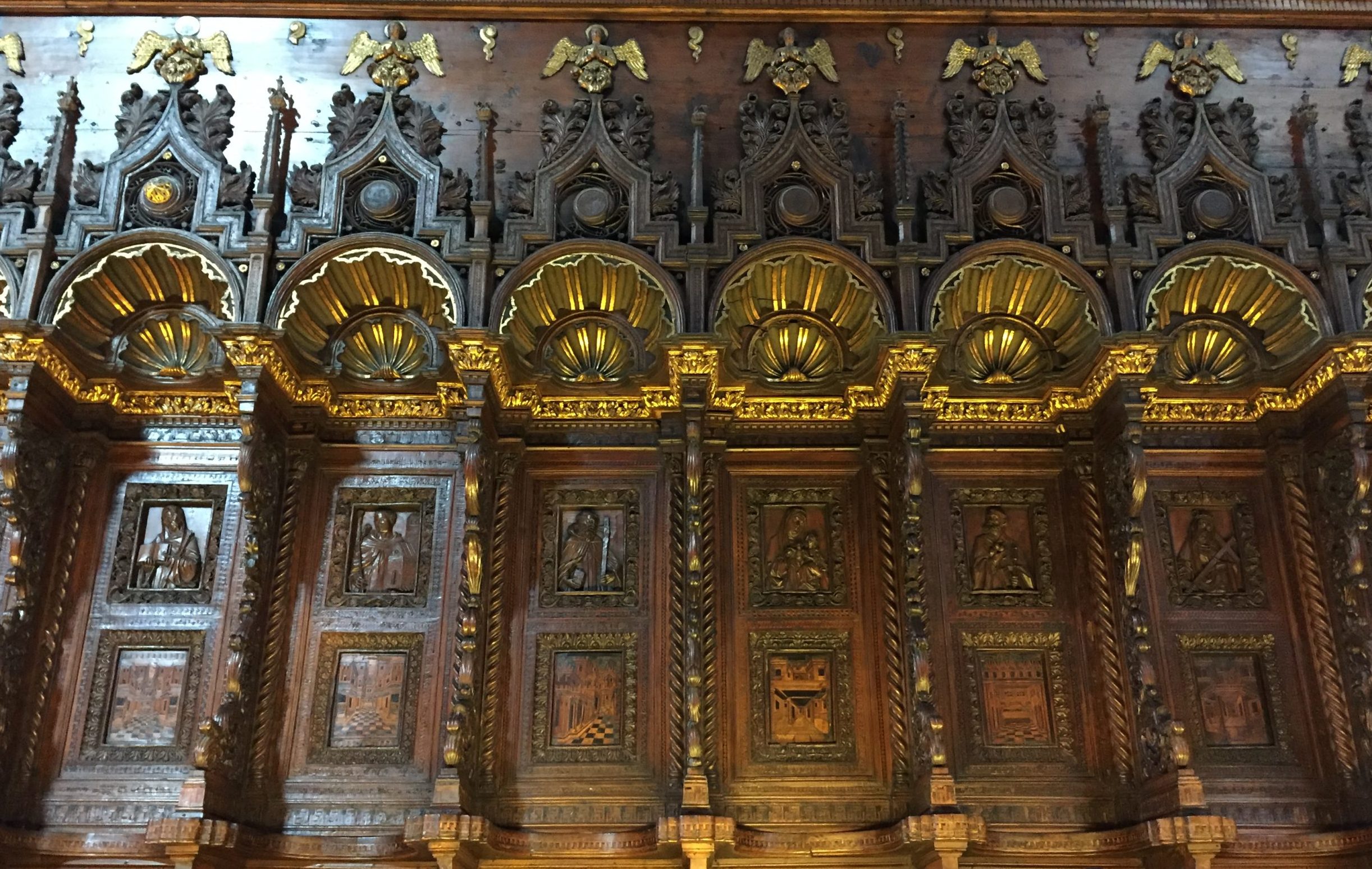
Both in the Accademia and in the Frari Church, the works of Cozzi show us the refined elegance of the Renaissance period: our favorite details are in the inlays of the choir, where different types of wood and the different colors they produce are used according to the rules of perspective to create ingenious three dimensional effects.
Francesco Pianta
The Frari Church hosts another wooden treasure, one which is probably overlooked by most visitors: this clock with a rich wooden frame carved with allegories of time created by the baroque artist Francesco Pianta in the 17th century.
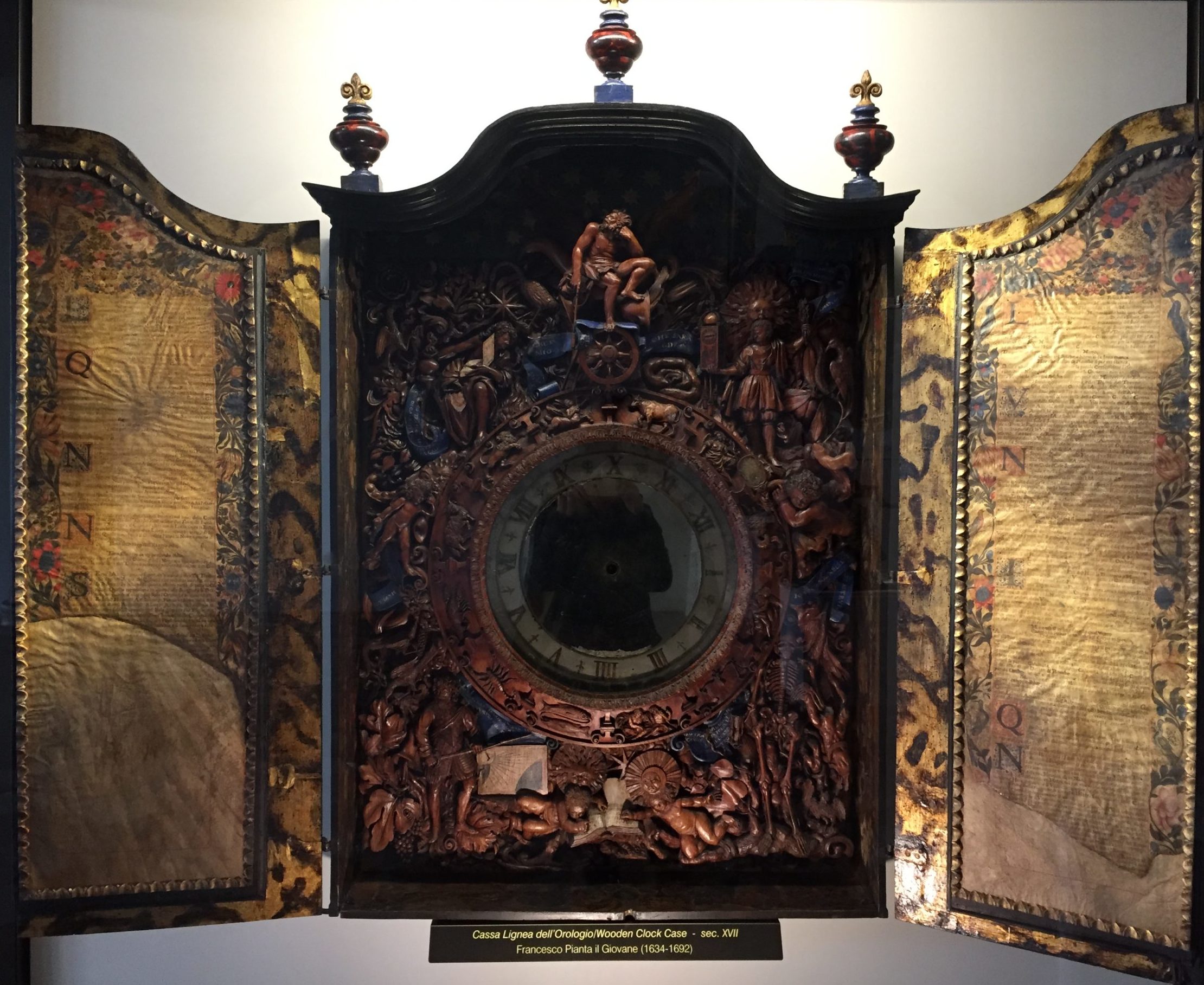
Very few works by Pianta are known, but his masterpiece is definitely the decoration of the panels in the upper hall of the Scuola Grande di San Rocco.
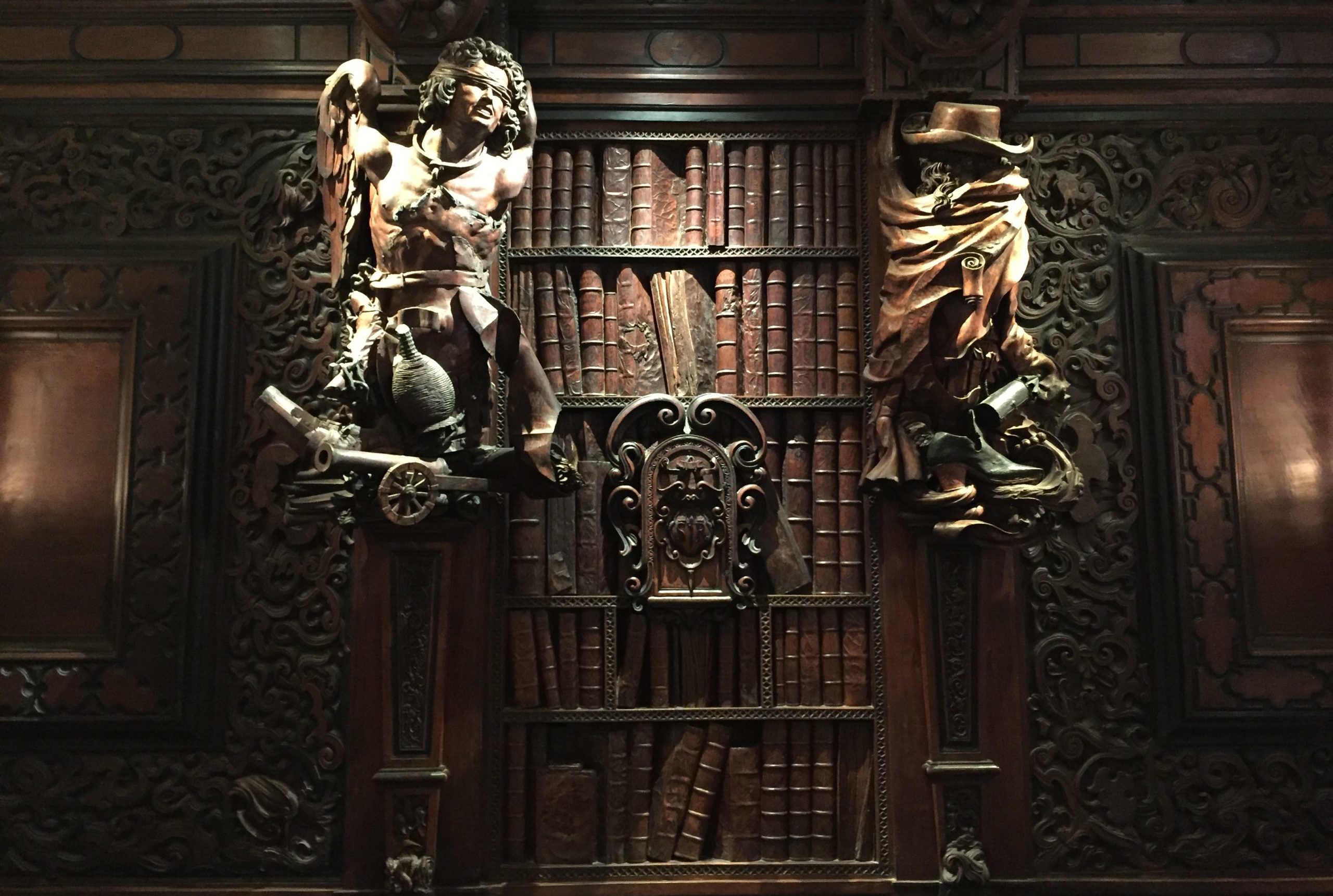
In line with the baroque culture that cherished complicated symbolism, the panels represent very elaborate allegories of virtues and vices, as well as a fake library containing 64 wooden books and a portrait of Jacopo Tintoretto, the artist who painted the famous decoration in the hall!
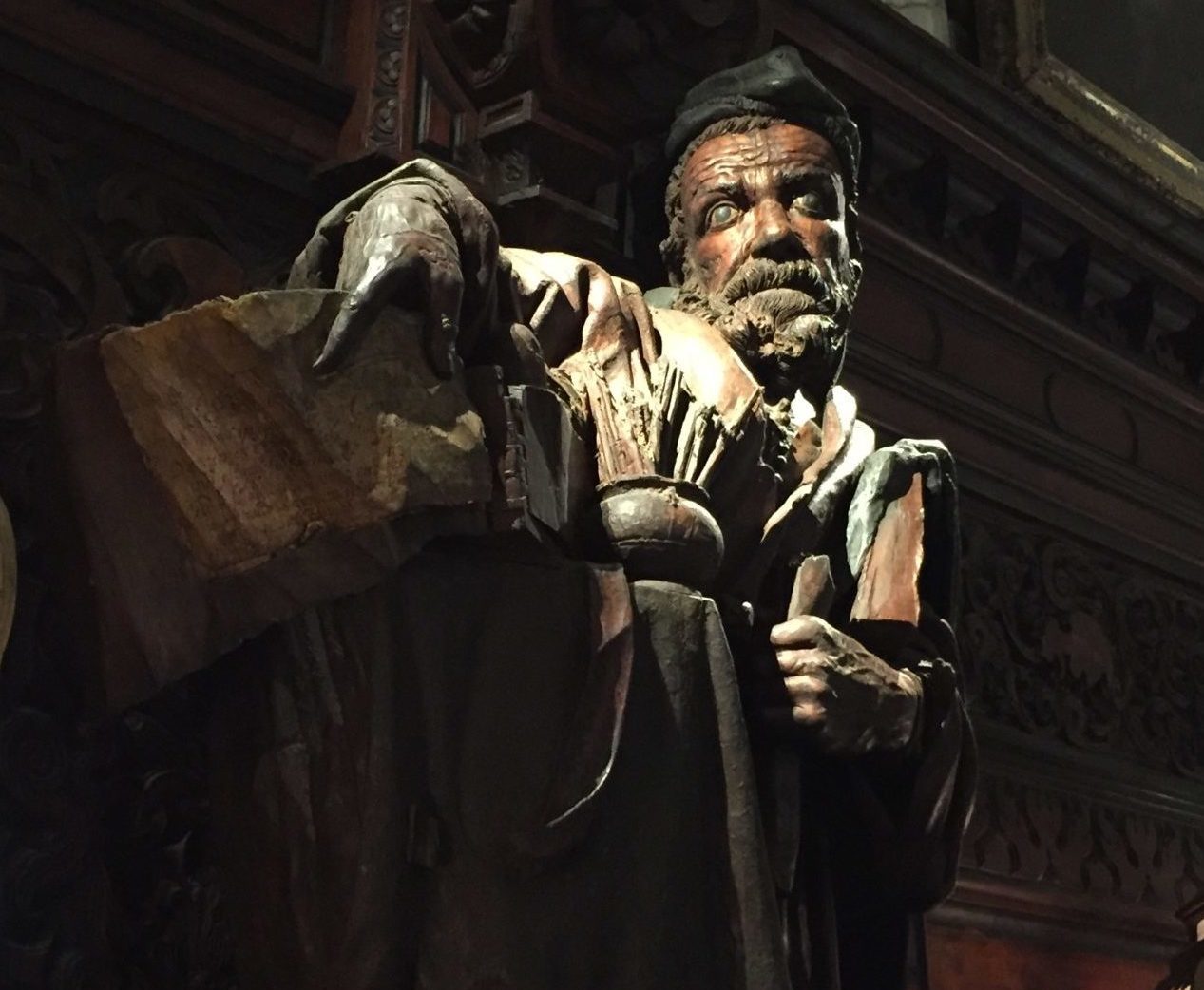
Pietro Morando
Another baroque masterpiece awaits those who take the time to go to the church of San Pietro Martire on the island of Murano. In the sacristy of the church are the backbenches of the Scuola di San Giovanni dei Battuti, which were moved there in the 19th century.
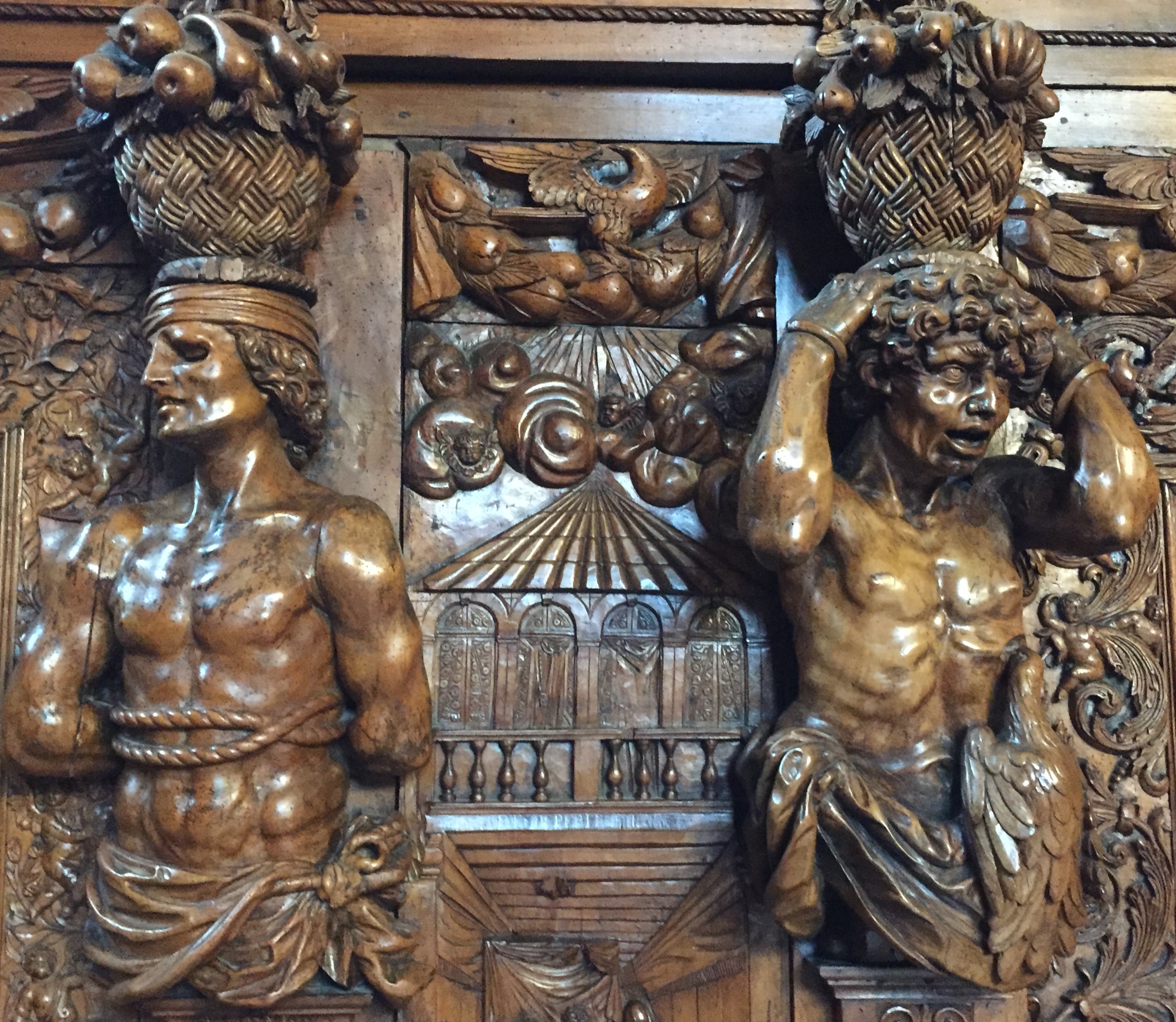
Stories from the life of St. John are carved on the panels and framed with a crowd of putti, masks, animals, and imaginary creatures. In between them are Caryatids representing the seasons, philosophers, and historical and mythological characters.

Both the sculptures and the reliefs convey highly dramatic feelings thanks to the strong expressions on the faces, the powerful bodies, and the lively scenes in foreshortening. It’s hard to believe that no other work by Morando is known!
Andrea Brustolon
Nicknamed “the Michelangelo of wood”, Brustolon created the most famous pieces of furniture in 18th century Venice.
In the Museum of Ca’ Rezzonico we can admire the set that belonged to the Venier family, where he mixed boxwood and ebony to transform chairs and vase stands into sculptures that almost remind us of the art of Bernini, which Brustolon had seen during his stay in Rome.
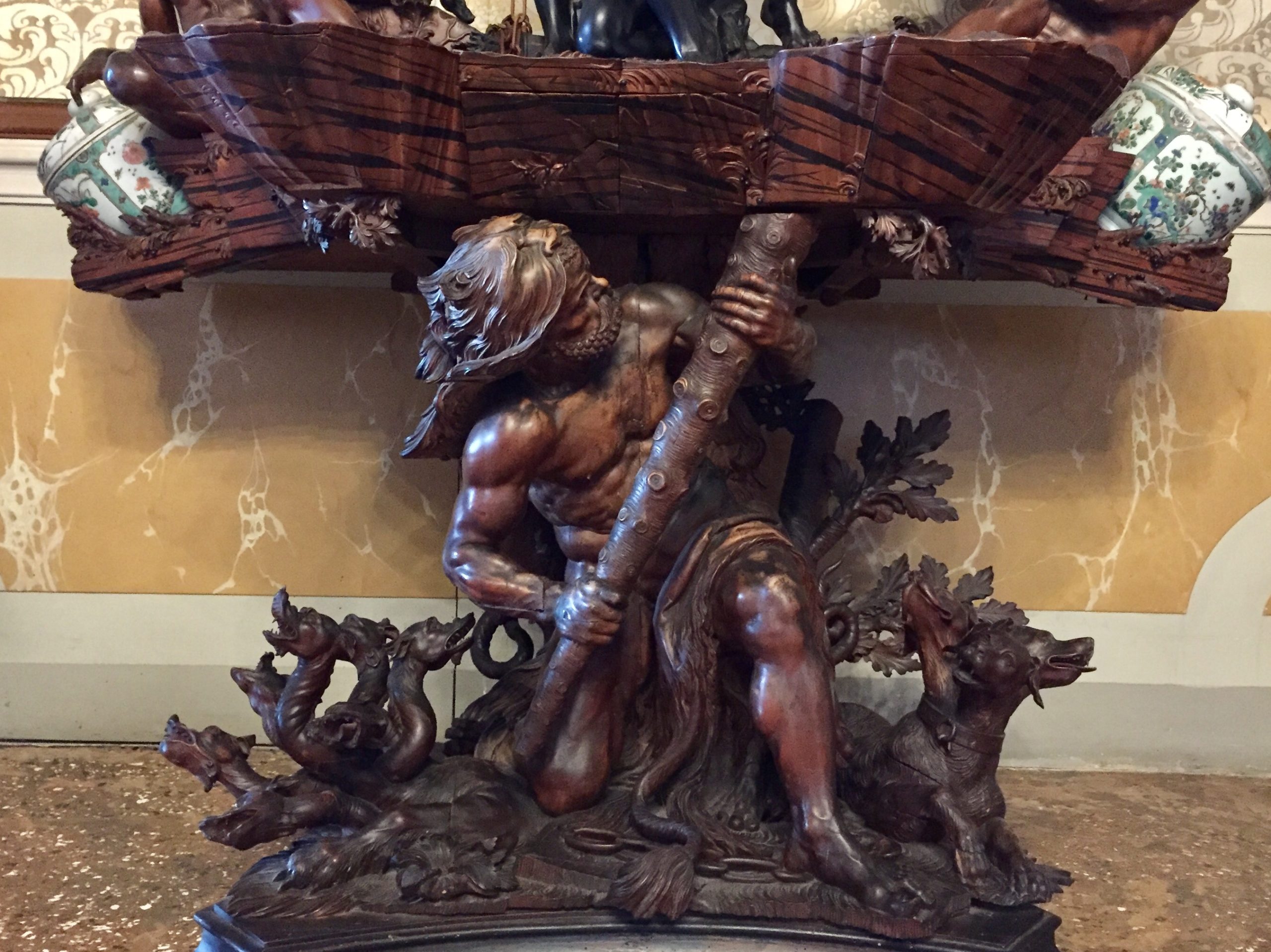
The arms of the chairs are turned into the branches of real trees, complete with leaves and berries.
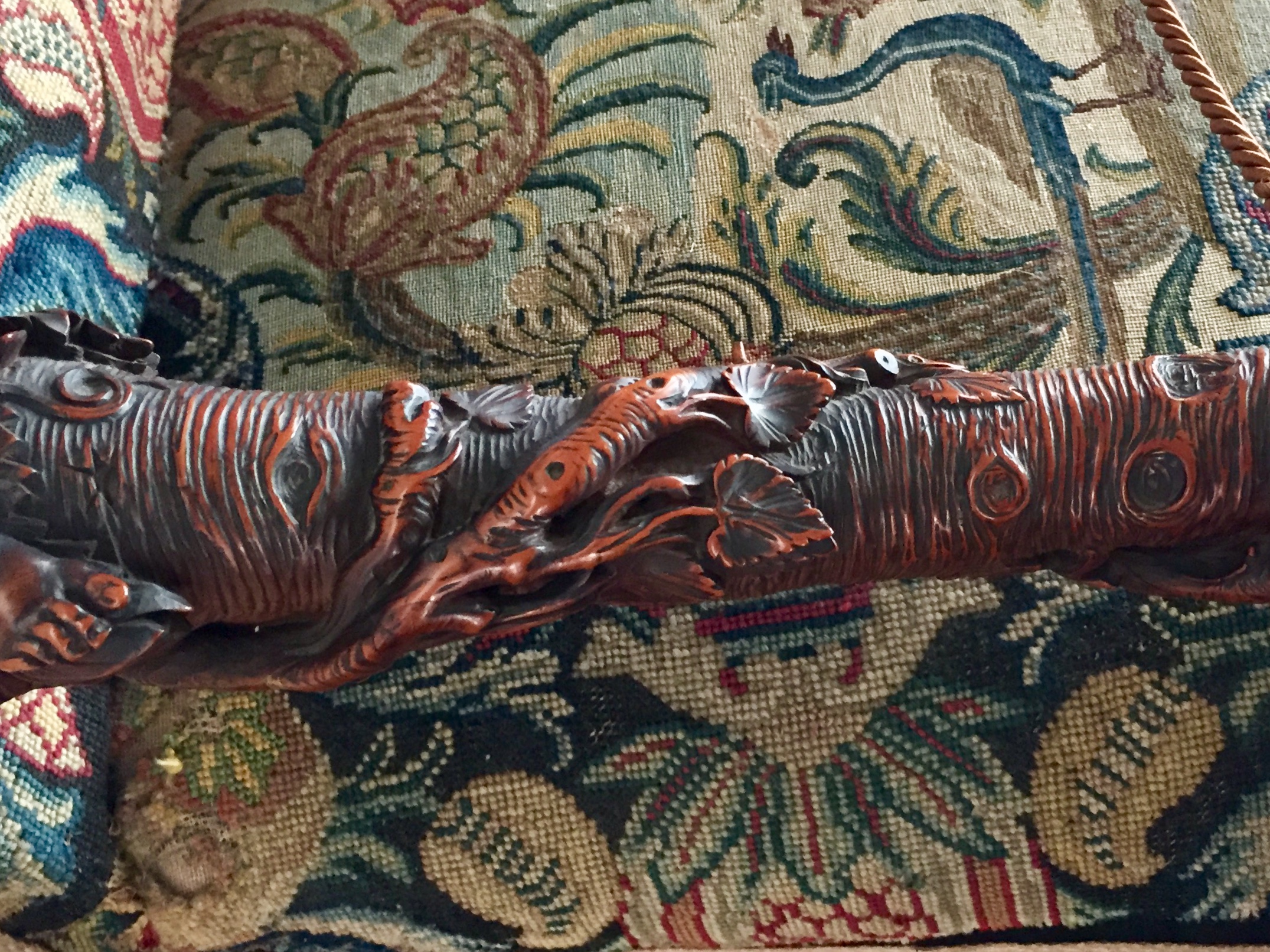
Our journey ends back in the Frari Church: here, at the top of a giant showcase for relics, two golden angels holding lamps seem to be dancing in the air. They are also by Brustolon, showing how his creations can range from powerful vigor to elegant grace.
